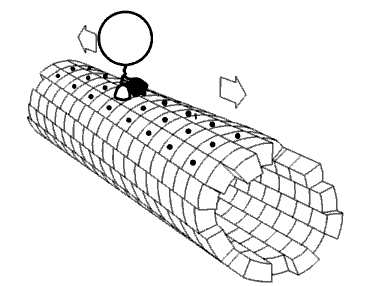
Photo from academic.microsoft.com
Covalent modifications and replication errors lead to DNA damage and mutation. Such errors occur frequently throughout the genome, disrupting the stability of the double helix. The 8-oxoguanine (8-oxoG) lesion, one… Click to show full abstract
Covalent modifications and replication errors lead to DNA damage and mutation. Such errors occur frequently throughout the genome, disrupting the stability of the double helix. The 8-oxoguanine (8-oxoG) lesion, one of the most widespread forms of DNA damage, mimics guanine with respect to hydrogen bonding, but perturbs base stacking, destabilizing the double helix. Other common forms of damage include mismatches, such at G-T and C-T base pairs, that are unable to form canonical hydrogen bonds. We have investigated the destabilizing effects of three abnormal base pairs (8-oxoG-C, G-T, and C-T) on the thermodynamic stability of DNA hairpins at the single molecule level. Each damaged hairpin shows a distinct pattern of unfolding that allows us to quantify hairpin destabilization. These data are combined with an mFold-based analysis to create energy landscapes of the unfolding pathway for perfectly matched, damaged, and mismatched hairpin duplexes.
Journal Title: Biophysical Journal
Year Published: 2017
Link to full text (if available)
Share on Social Media: Sign Up to like & get
recommendations!